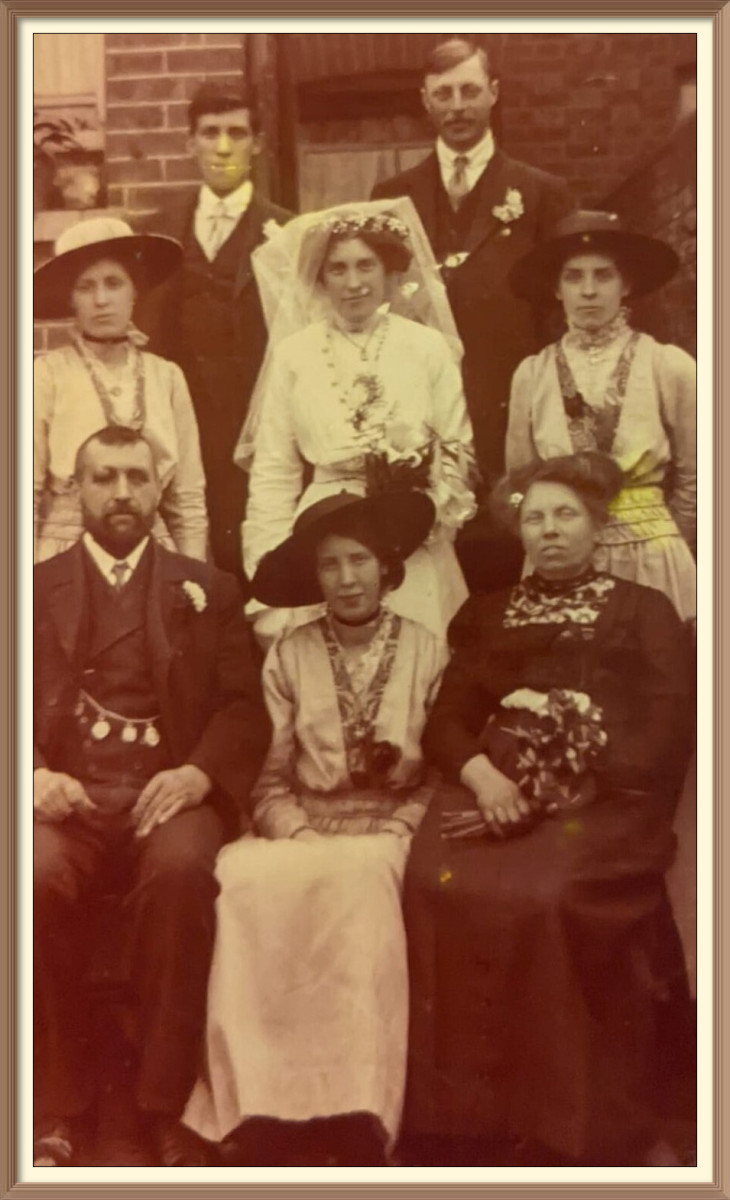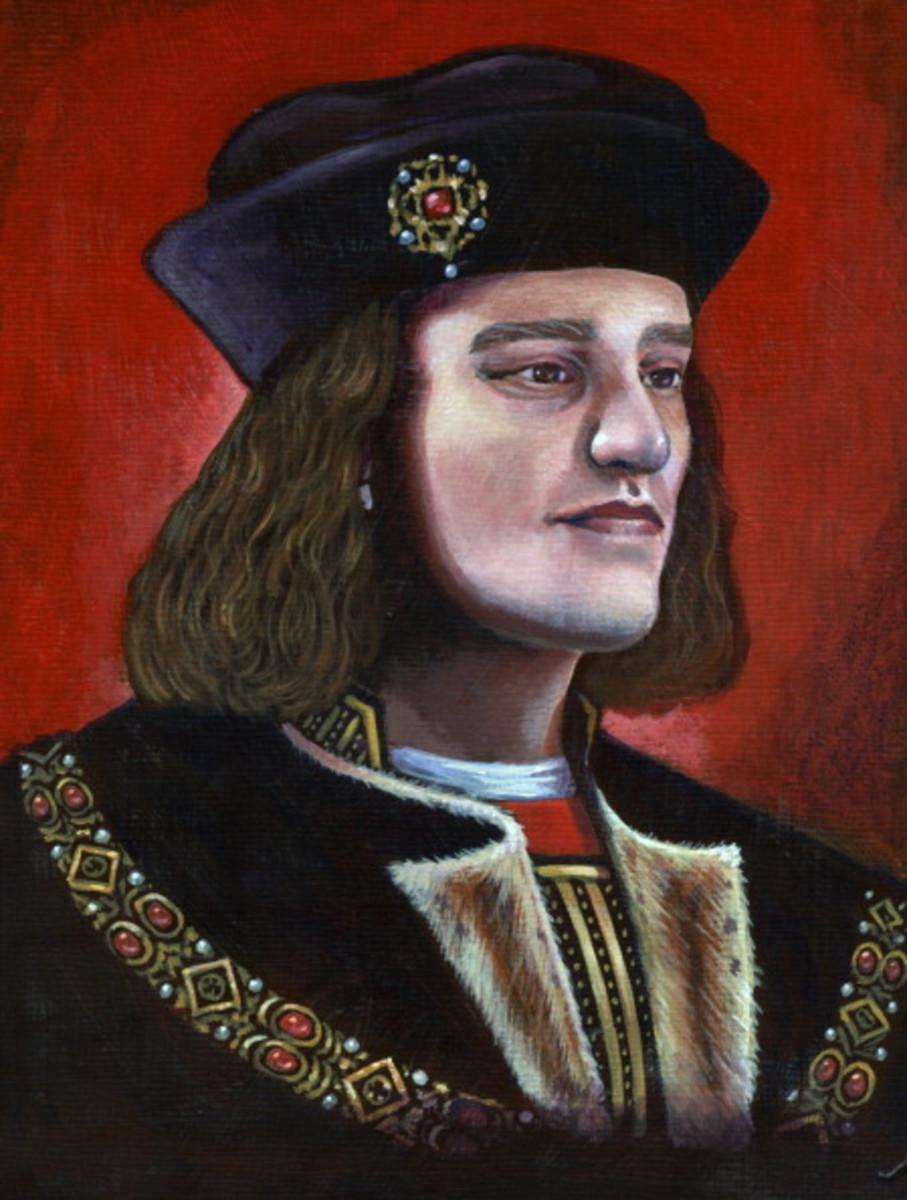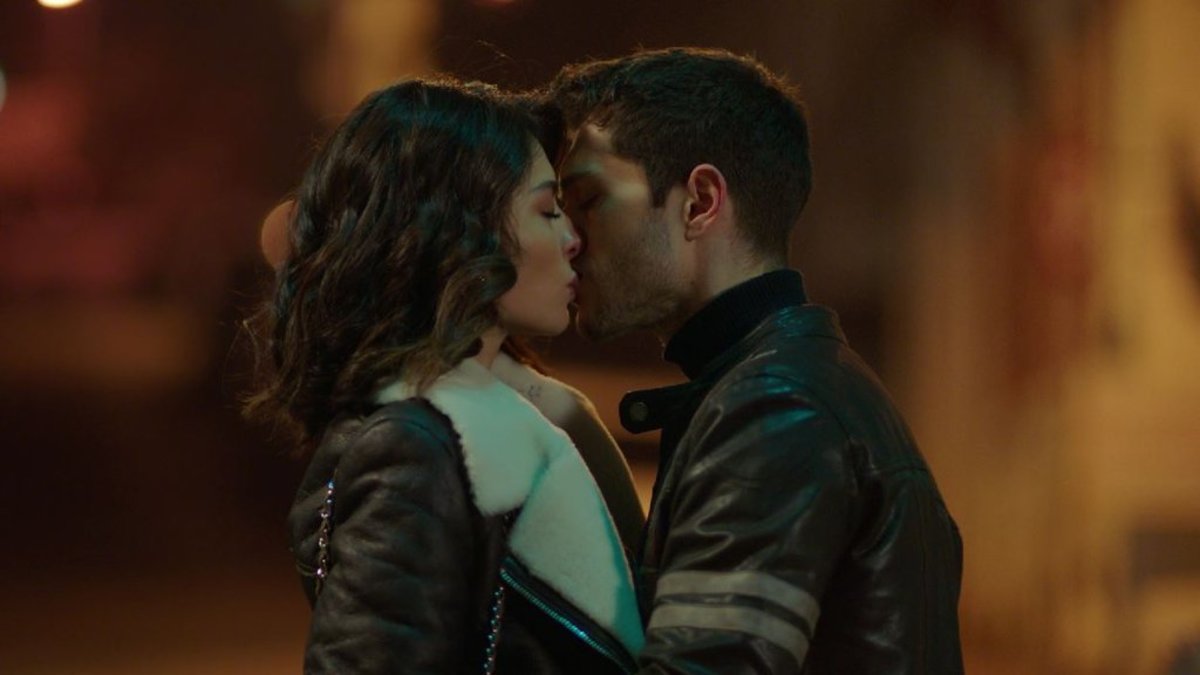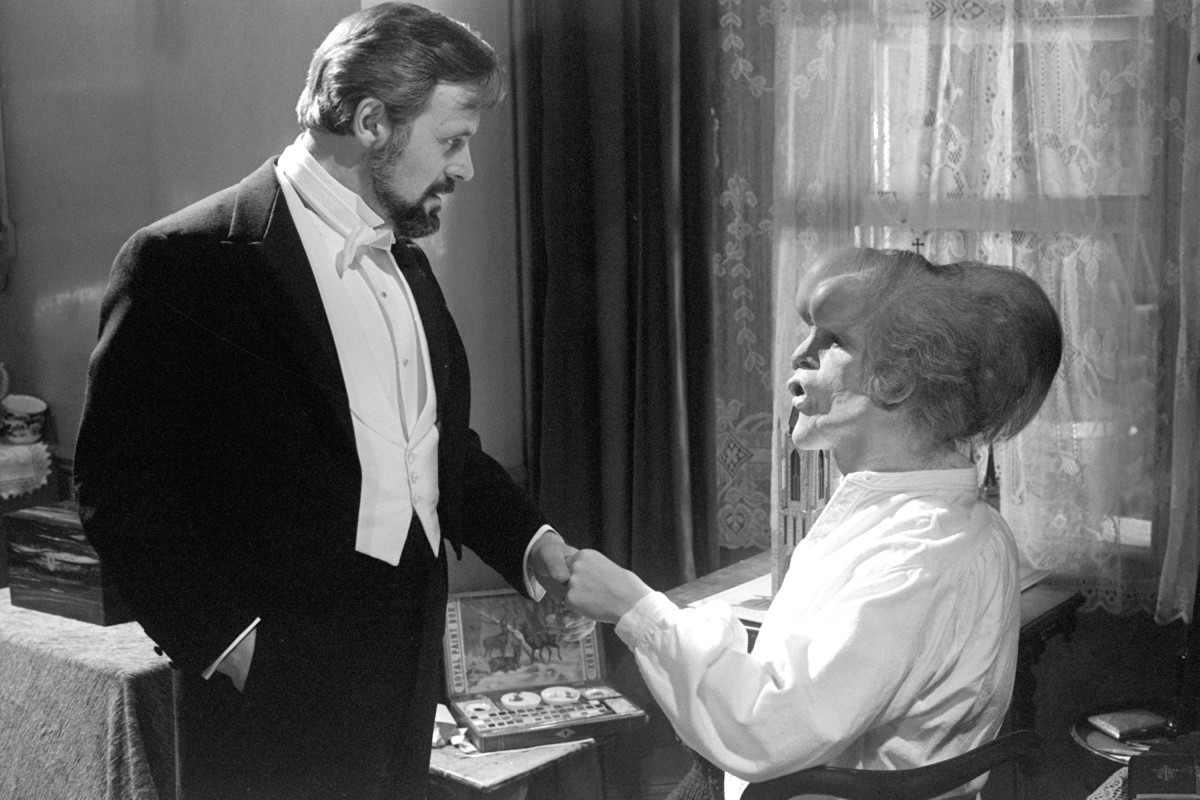Richard Linklater and the Art of Long-Term Storytelling
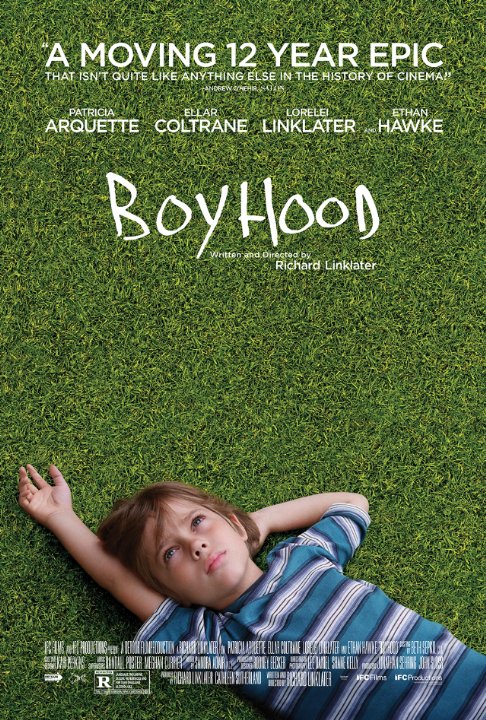
Director Richard Linklater has proved to be a stellar filmmaker as well as a unique storyteller. Much of his work deals with the context of time and its role in the evolution of his characters. In particular, four of his films deal with the framework of time and what it means for his characters to exist in this world. One film took the bold task of documenting the adolescence of a young boy by filming the actors over the course of a twelve year period, which displayed the aging and progression of a single family on screen. The other three is a trilogy of two characters filmed over the course of 18 years with the two sequels released nine years apart. A man and a woman meet by chance and each film documents a single day with those two. All four films follow a minimalist plot but gives an intimate glimpse into these characters. The following is a look into how Linklater accomplished the feat of long-term storytelling of two separate stories.
Boyhood
Filmed over the course of twelve years, “Boyhood” accomplished the incredible task of documenting the life of a young boy growing up with divorced parents in Texas as the characters age over the course of the film. Ellar Coltrane, who was only seven years old when he was cast in the film, stars as Mason Evans, Jr., a young boy living with his older sister Samantha (Lorelei Linklater, daughter of Richard) and divorced mother Olivia (Patricia Arquette). With no real traditional plot, the film is divided into small segments of each year, a snapshot of the progression of his adolescence. In an interview with Entertainment Weekly, Linklater said the film “became a 12-year journey about coming to grips with my own childhood, while also understanding parenting.”
Told from the perspective of Mason Jr. beginning in 2002, mother Olivia decides to move her two children to Houston and pursue her completion of college after the divorce from her husband Mason Sr. (Ethan Hawke). At first, Mason Sr. is a directionless man who tries to bond with his children as best he can while being limited to the amount of time together. Mason Jr. is often shy and unmotivated for most of his studies, occupying his time playing video games of being with friends.
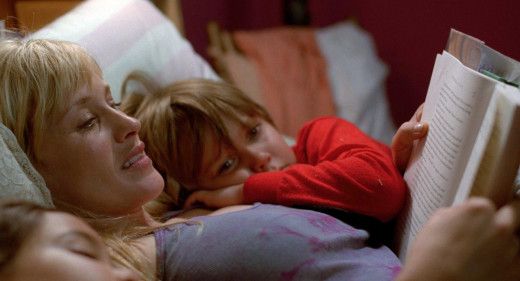
While studying psychology in 2004, Olivia begins to date her professor named Bill Welbrock (Marco Perella). By the following year, the two marry and Bill’s two children from a previous marriage join Mason and Samantha. However, Bill’s alcoholism ends up tearing apart the family, becoming increasingly strict with his children and step-children and is violent towards Olivia. She moves her and her children out and divorces Bill. The family moves to San Marcos where Mason Jr. is enrolled in middle school and his mother completes her education and would later become a professor at a nearby college. Mason Jr. is often teased and bullied at his new school but begins showing interest in girls.
Over the course of his high school years beginning in 2010, he begins a romantic relationship, experiments with marijuana and alcohol with his friends, and finds a knack for photography despite having a teacher push him to be more ambitious with his potential. Meanwhile, Mason Sr. finds a steady job as an insurance agent, re-marries and becomes a new father. He continues to bond with his children, including a camping trip with Mason and takes them to meet their new step-grandparents. Aside from his parents’ different relationships with other people, there are no real landmark moments, but rather a look into the typical life of a young boy growing up. Over the course of production, Linklater’s focus on the project was reaffirmed by his commitment. In an interview with Entertainment Weekly, Linklater said “our lives don’t have plot so much as they have character and a time structure. I knew I was trading one for another.” In the same interview, Hawke, who has appeared in seven of Linklater’s films, said, “a lot of Rick’s movies have these funny, very simple ideas. ‘I want to make a movie about riding a EuroRail and meeting a girl on the train [in reference to "Before Sunrise"].’ ‘I want to make a movie about high school graduation.’ It’s just his commitment to the idea that becomes so powerful.”
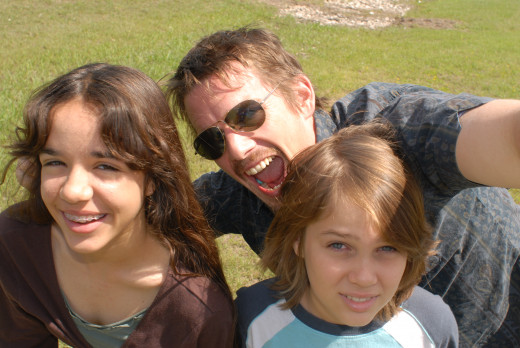
Upon viewing the film for the first time, it’s kind of difficult to comprehend that twelve years of progression was accomplished in a little over two and a half hours on screen. Near the end of the film as Mason Jr. is off to his first year of college, he finds his mom visibly upset. Olivia expresses her overwhelming emotions about her years as a mother and a wife over the last twelve years that audiences just witnessed: “You know what I'm realizing? My life is just going to go. Like that. This series of milestones. Getting married. Having kids. Getting divorced. The time that we thought you were dyslexic. When I taught you how to ride a bike. Getting divorced... again. Getting my master’s degree. Finally getting the job I wanted. Sending Samantha off to college. Sending you off to college. You know what's next? Huh? It's my fucking funeral!”
What makes this film remarkable and unique was the ability of Linklater and the cast to tell this story over such a long time period. While traditionally a film that documents an adolescent character will use a number of different actors to represent the different ages depicted across the film, “Boyhood” took the bold initiative to hire these four principle actors and commit to a twelve-year endeavor. The actual production of the film took only a few weeks of each year. In an interview with The Daily Beast, Linklater said, “The shoots were pretty limited—maybe three days. But to do a three-day shoot, you’ve got to cast, scout the location, get an office, crew up, get the film stock. It’s like making 12 films since you’re originating 12 films. Everything was times 12.” In between productions, Coltrane was home-schooled and later went to high school in Texas, Hawke and Arquette continued as full-time actors while Linklater completed a number of critically acclaimed films like “School of Rock,” “Me and Orson Welles,” “Bernie,” as well as the two sequels to the “Before” trilogy.
There was no completed script at the beginning of the first year. Linklater had his outline of the story and knew how it would end. But the final script was a collaboration with the cast, as he was able to get their input to better shape their characters. For instance, Hawke’s Mason Sr. becomes an insurance agent, which reflected both his and Linklater’s father’s profession. Arquette’s character Olivia is named after her mother, who also in real life went back to school to complete her degree later in life.
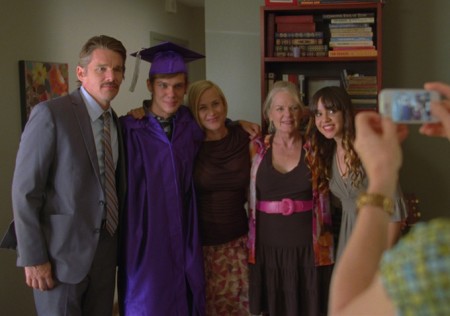
Since there was no script set in stone, Linklater was able to adapt each year as a reflection of what was going on in the world at each interval. Near the beginning of the film when Mason Sr., a staunch Democrat, takes his children bowling he goes into a rant against President George W. Bush and the Iraq War. Later in 2008, he has his children put campaign signs out for then-candidate Barack Obama. What’s also interesting to see was the evolution of technology over the course of those 12 years. In a Buzzfeed article about the depiction of gaming in the film, writer Joseph Bernstein remarks, “in the first half of the movie, Linklater’s camera pays consistent, and nonjudgmental, attention to the games Mason plays. Right away we see Mason wailing away on a Game Boy Advance, in its iconic clamshell iteration. Soon after, a teacher struggles to pull Mason away from The Oregon Trail on a school computer. Then comes (incongruously?) a Tamagotchi, an Xbox (with Halo), and Wii Sports. Considered purely as a time capsule, these references are fascinating.” In addition, the use of music over the course of the film is a reflection of popular songs in each time period. The early 2000’s is represented with Coldplay’s “Yellow” as it plays over the opening credits, Samantha sings Britney Spears’ “Oops I Did It Again” to the annoyance of her brother and Sheryl Crow’s “Soak Up The Sun” plays as the family moves to Houston. In 2007, Soulja Boy’s “Crank That” plays as Mason is spending time with his friends. By 2009 Samantha is a fan of Lady Gaga and in 2012, Gotye’s “Somebody That I Used to Know” is playing on a jukebox at a bar.
Upon its release, the movie received wide critical acclaim. While not a huge box office success, the film benefited from word-of-mouth praise and performed fairly well given its small production budget. Several of Linklater’s films have become cult favorites about nostalgia (“Dazed and Confused”), love (“Before Sunrise”) and philosophy (“Waking Life”). But “Boyhood” connected audiences on a more personal level. Upon the positive feedback he’s received, Linklater remarked, “everyone was having a similar experience but a very different one based on his or her own life. ‘Oh, I had an asshole stepfather,’ ‘Oh, I have an older sibling,’ ‘Oh, my parents are divorced.’ People were glomming on to such different things while moving through the movie that it made me feel better. It was so personal to everyone.”
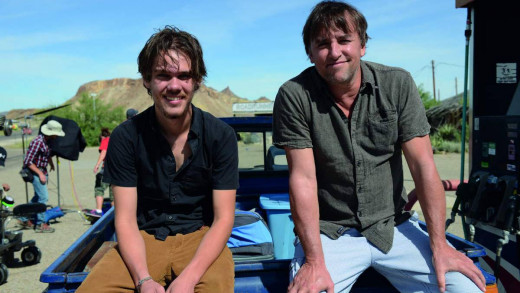
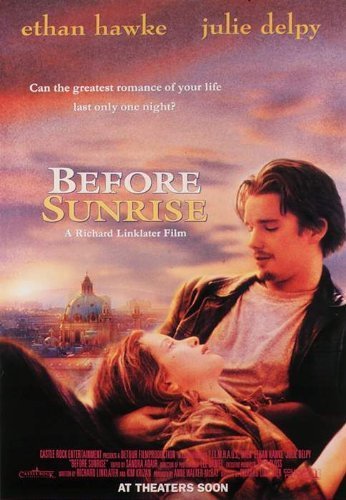
The "Before" Trilogy
In 1994, Linklater wrote a story about an American man and a French woman who happen to meet and spend a day in Vienna. What started out as an exploration of the relationship side of life would later turn out into an 18 year journey, revisiting these two characters every nine years. While two sequels were released in 2004 and 2013, it may not have been the intention of Linklater and stars Ethan Hawke and Julie Delpy to go beyond one film. But in the context of time, the three desired to reunite after so many years and explore what their characters have been up to.
In a chance meeting upon a train from Budapest in the summer of 1994, Jesse (Hawke) strikes up a conversation with Céline (Delpy) and they develop an instant rapport with one another. Jesse, an aspiring novelist, is on his way back home to America after traveling to Europe to spend time with his girlfriend who ended the relationship soon after he arrived. Spending the remainder of his trip sightseeing, he has one last day until his departure. Céline is a student from Paris who had just visited an ailing grandmother. Upon getting to know each other, Jesse convinces Céline to get off in Vienna and spend the night with him roaming the city streets since he is almost out of money and cannot afford to stay in a hotel. As the title suggests, Jesse and Céline only have until sunrise before Jesse must depart for good.
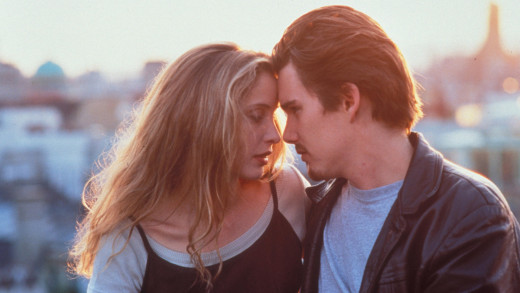
The “walk-and-talk” approach to the film with its emphasis on dialog sets the tone for the entire trilogy. As they learn more about each other and their take on politics, religion, love, and their impressions of the city, audiences get to be a fly on the wall as these two experience a memorable night. Around sunset, they share their first kiss aboard the Wiener Riesenrad Ferris wheel. While walking alongside the Danube canal, a man approaches and instead of begging, he offers to write the two a poem based on a word of their choosing. Their attraction to each grows intensely by the end of the night with the implication of a sexual encounter. Morning comes and the two decide not to exchange contact information but instead promise to return to the same spot six months later.
Released in 1995, “Before Sunset” was met with critical acclaim. Linklater admitted that the inspiration for the story and the two leads were inspired by a woman he met in a toy shop in Philadelphia in 1989. Like Jesse and Céline, the two walked around the city all night, engaged in deep conversations. In a 1995 interview with him and co-writer Kim Krizan for Film Threat magazine, Linklater said he wanted to explore the "relationship side of life and discover two people who had complete anonymity and try to find out who they really were". Linklater decided to put Jesse and Céline in a foreign country because "when you're traveling, you're much more open to experiences outside your usual realm."
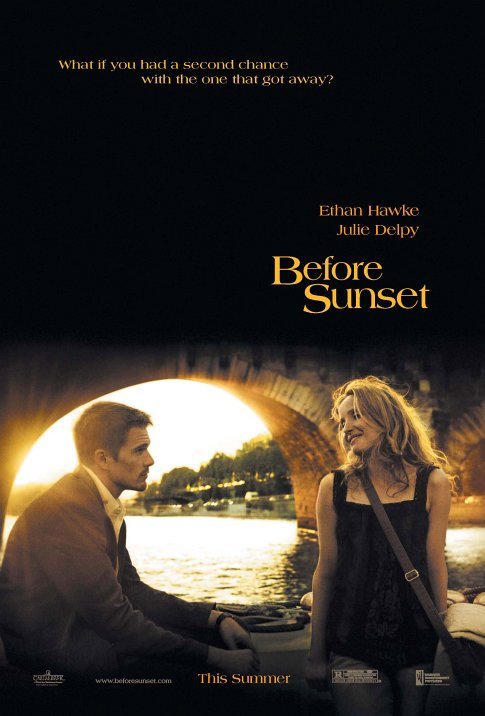
Nine years later, Linklater followed up with “Before Sunset,” reuniting the two in Paris. Jesse, now a published author, is promoting his latest book one afternoon in a Parisian bookstore. The book, “This Time,” was inspired by Jesse’s night with Céline and becomes a bestseller. As he is winding down questions from the press, Jesse happens to see Céline watching from the back of the bookstore. Reunited, their time together is limited as Jesse’s manager reminds him he only has an hour before he must depart for the airport. They make the best of their time walking around Paris, learning how they spent the previous nine years apart. Jesse had married and become a father to a young boy. Céline, now dating a photojournalist, is working as an advocate for the environment. The two engage in back-and-fourth discussions on life, politics, and their relationships. Jesse admits that he had returned to Vienna six months after their first night together to find that Céline had not returned. For eight and half years, Jesse lived with the notion that he was stood up. However, Céline reveals that the only reason she could not make it was because her grandmother had passed away and was unable to return.
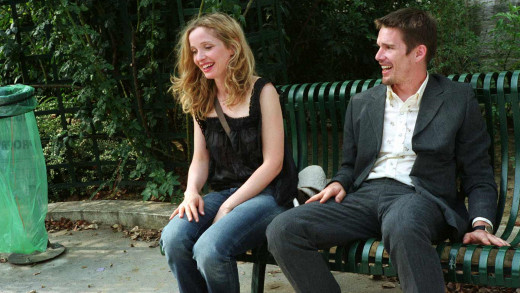
Like the first film, “Before Sunset” sees these two characters catching up with the beautiful backdrop of Paris behind them. For fans of the first film that got to know the characters, it’s a real treat seeing them together again, reminiscing. As their time together closes in, Céline invites Jesse back to her apartment and begin listening to music together. In an ambiguous ending, it’s implied that Jesse decided to miss his flight so that he may spend more time with Céline. For the sequel, Linklater enlisted both Hawke and Delpy to collaborate on the screenplay, due in part for the opportunity to write for their own characters. In Roger Ebert’s review of the film, he declared the film “was a remarkable celebration of the fascination of good dialogue. “Before Sunset” is better, perhaps because the characters are older and wiser, perhaps because they have more to lose (or win), and perhaps because Hawke and Delpy wrote the dialogue themselves." The screenplay earned the three of them an Academy Award nomination for Best Adapted Screenplay, a first for both Linklater and Delpy, and a second for Hawke, who was previously nominated for Supporting Actor for the 2001 film “Training Day.”
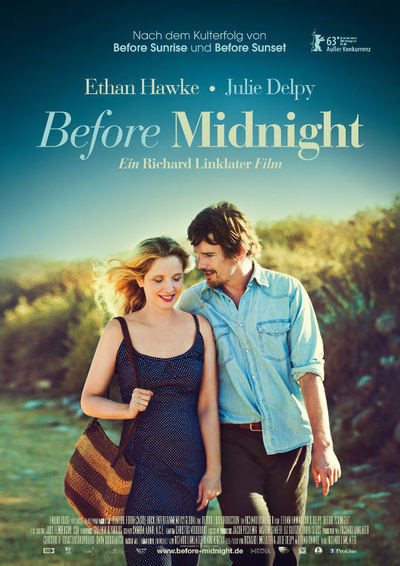
Nine years later,“Before Midnight” was released in 2013. Jesse and Céline are now a couple with twin daughters. The film opens with Jesse sending his son Hank from a previous marriage off at the airport while spending summer vacation in Greece. Jesse struggles to maintain a close relationship with his son while balancing his relationship with Céline and his two daughters. While staying in Greece, Jesse has continued success as a novelist while Céline is at a career crossroads and considering taking a job with the French government. The two reminisce with friends over dinner about their coming together nine years previously and their relationship over the years. While spending the rest of the day on their own walking the countryside in the Peloponnese peninsula, the night culminates in a hotel room together alone paid for by their friends. The two argue by expressing fear about their future, from Jesse wanting to remain a close father to Hank that could require moving back to the U.S. or return to France to fulfill Céline’s job opportunity. While Jesse’s career as flourished, Céline fears of falling into the role of a submissive housewife.
Like “Before Sunset,” the third film was written by Linklater, Hawke, and Delpy. The three were all open to making a third film and in a 2011 interview with French website Allocine, Hawke revealed that he, Delpy and Linklater were negotiating a third outing for the transatlantic couple. "All of three of us have been having similar feelings that we're ready to revisit those characters," said Hawke. "There's nine years between the first two movies and, if we made the film next summer, it would be nine years again, so we really started thinking that would be a good thing to do. We're going to try to write it this year."
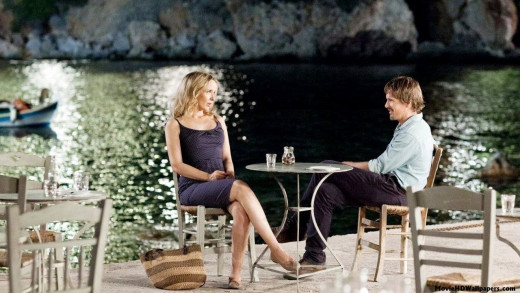
For fans of the first film that first saw it in 1995, the trilogy of these two characters turned out to be 18 years in the making. What could be perceived as a fairy-tale coming together of two lovers, the trilogy concludes by reminding audiences of the imperfect realities of every relationship. In his review of the film, New York Times film critic A.O. Scott remarked “though Celine and Jesse are not married, “Before Midnight” fits this description almost exactly, which is to say that it is exquisitely attuned to the fragile, flawed nature of their bond. We have known them, and they have known each other, for a long time now, but we don’t know, from one moment to the next, what their future will be, or what it is that keeps them going.” Like the previous two, “Before Midnight” received wide critical acclaim and Linklater, Hawke, and Delpy were nominated for their second adapted screenwriting Oscar at the Academy Awards.
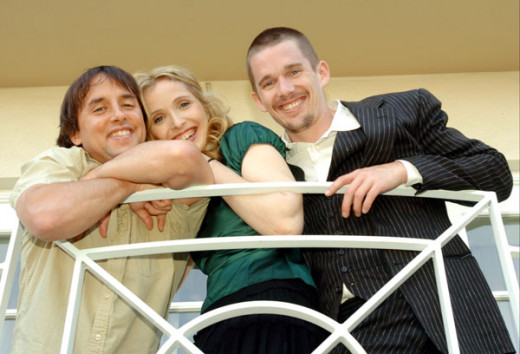
The “Before” trilogy offers a rare chance of watching the lives of two lovers blossom over the period of almost two decades. While the first nine years were book ended by their first and second encounter, the next nine years saw the progression of their relationship, both as a couple and as parents. As the characters grew older and wiser, audiences witnessed actors Hawke and Delpy grow up into adulthood over the course of the two sequels. Unfortunately for myself, I did not have the opportunity to begin the journey when the first film was released in 1995. Instead, I watched the three films for the first time over the course of a couple of weeks after the third film had been released. My perception of Jesse and Céline and their 18 years together was rather brief. Some audiences had to wait nine years in between each film to see what happened next, even though there was no guarantee of a follow-up after each film. In the beginning of the first sequel, “Before Sunset,” Jesse is wide-eyed when he sees Céline for the first time in nine years inside that Parisian bookstore. I can only imagine the glee fans of the first film felt when they saw an older Jesse and Céline reunite. A trilogy of films may not have been Linklater’s original vision but he was able to successfully pull off an 18 year exploration into two characters that satisfied audiences.

